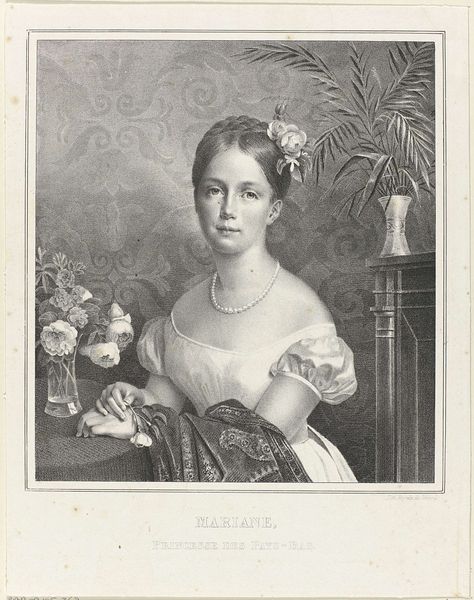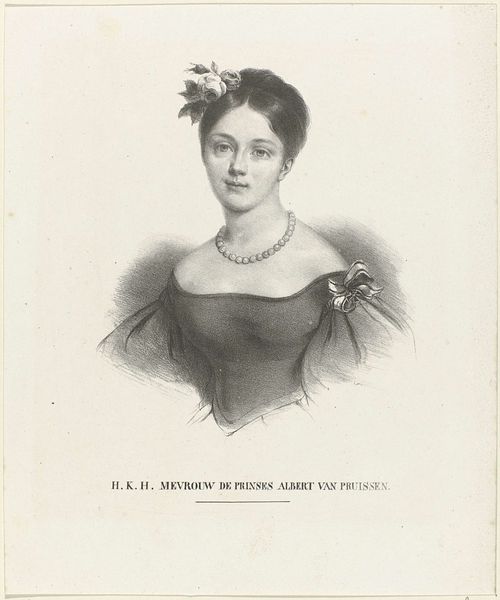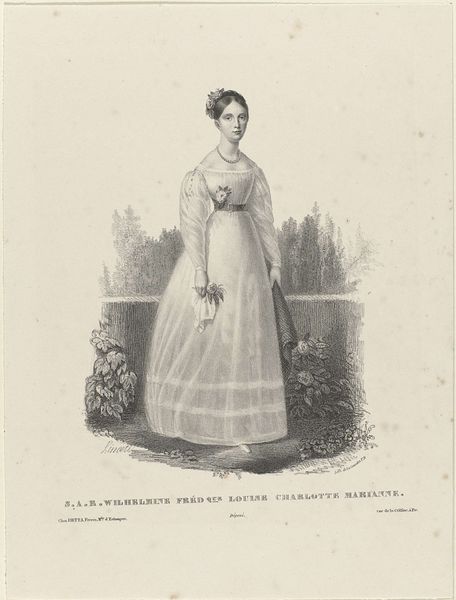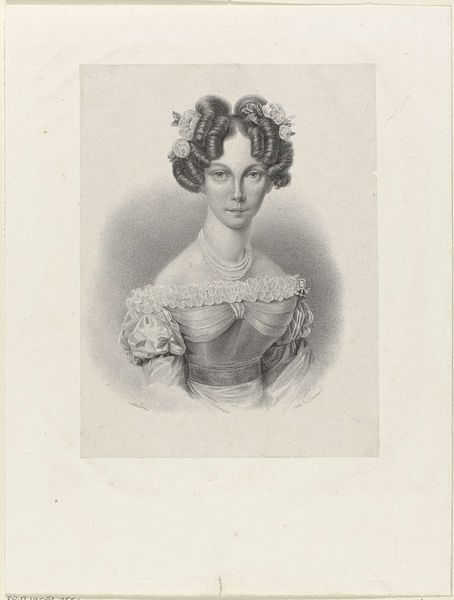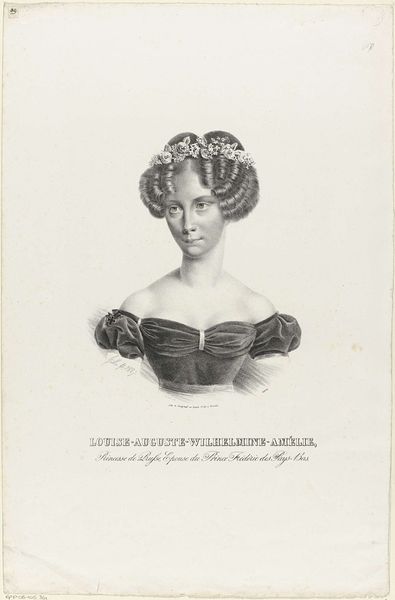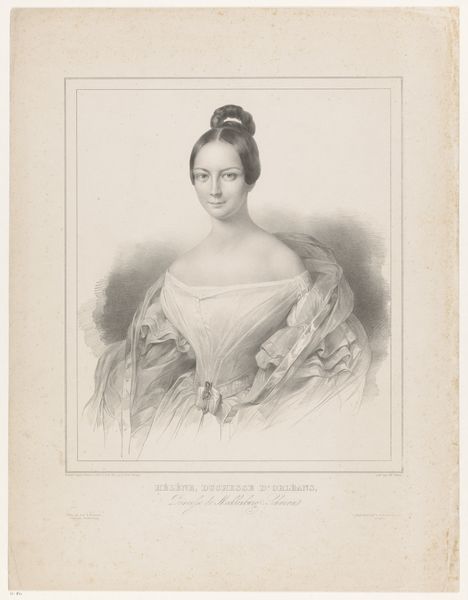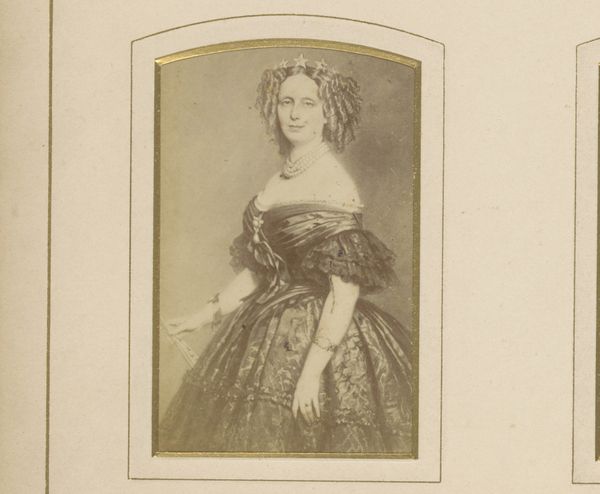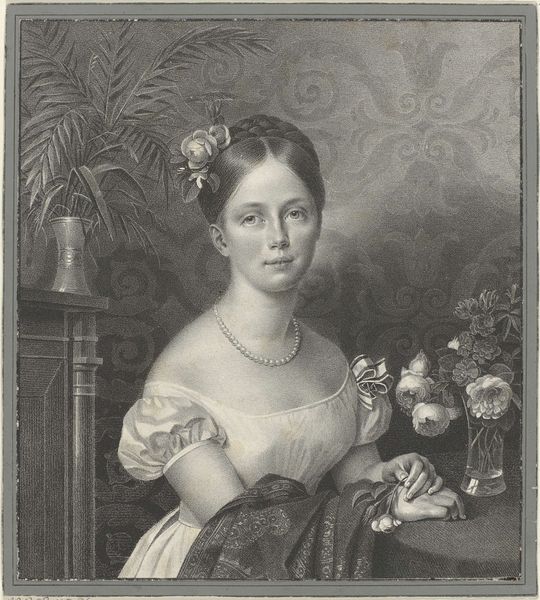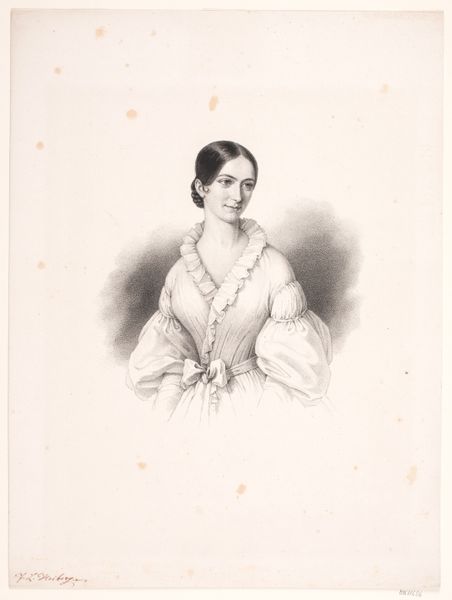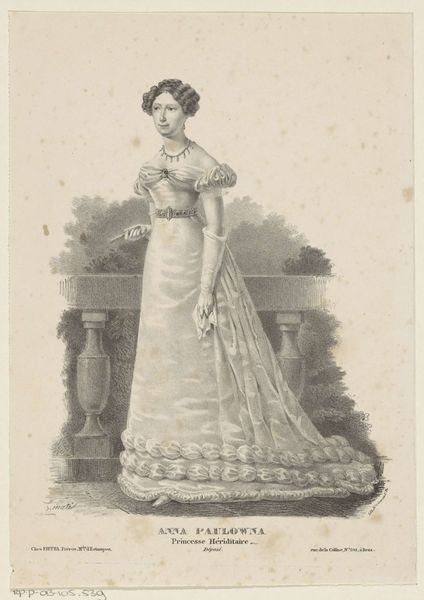
drawing, pencil, graphite
#
pencil drawn
#
drawing
#
pencil sketch
#
pencil drawing
#
romanticism
#
pencil
#
graphite
Dimensions: height 546 mm, width 357 cm
Copyright: Rijks Museum: Open Domain
Curator: Upon closer inspection, what strikes me first is this drawing’s tender and delicate quality. Editor: Absolutely, it almost whispers. Seeing this portrait, a graphite work titled *Portret van Marianne, prinses der Nederlanden* crafted around 1827 by P. Gillo, there’s this overwhelming sense of… wistful calm. The detail is startling for what’s essentially a pencil sketch. Curator: Yes, Gillo captured Princess Marianne in a style reflective of Romanticism, focusing on her serene beauty. It presents a curated vision, but one typical of royal portraiture intended to project power and virtue. We must remember who this was made for. Editor: Indeed, but it’s funny how the eye is still drawn to the intimate details that hint at her personality: that small gathering of roses near her hair, the subtle shading implying softness. The eyes seem… haunted? Almost daring to glimpse some truth behind all that stately obligation. Curator: What strikes me is the visual grammar it employs. Take, for instance, the soft light used to accentuate her face. It embodies the Romantic era’s tendency to idealize subjects, promoting beauty and moral integrity—necessary characteristics in projecting royalty. But it does more than this, it also projects power through lineage and dynastic connections with other European royal families. Editor: Precisely! But I get a sense that something personal flickers within these formal techniques. Pencil portraits always felt vulnerable and immediate in ways oil paints couldn’t. You sense the hand and time of the artist and sitter in such works. It reveals something about them. The shading alone suggests longing—or just melancholic reflection in between official sittings? Maybe, just maybe, her own self. Curator: That melancholic mood seems largely applied. Her posture, her gaze – all very deliberate for image control. It projects a softness, even when nobility rarely enjoyed softness. And as a curator, I wonder: does the image perpetuate or question the values upheld by her family and status at the time? This becomes a larger consideration with any portrait—then and now. Editor: Right. Still, stepping back – one imagines the soft scratch of pencil on paper as Gillo captures her essence under watchful eyes, striving to immortalize privilege on paper, something ephemeral but lasting all the same. Curator: A fine point to consider. Studying this, in the Rijksmuseum among so much other royal imagery, tells you not just about Princess Marianne but how notions of royal feminine influence were evolving as such. Editor: And I leave seeing more—her humanity caught within a carefully crafted piece—reminding myself how humans still make sense of themselves between identity, image, and the silent language between artist and the art itself.
Comments
No comments
Be the first to comment and join the conversation on the ultimate creative platform.
